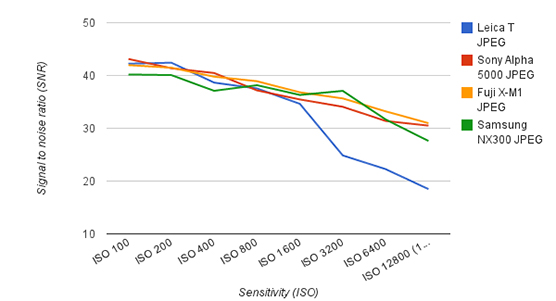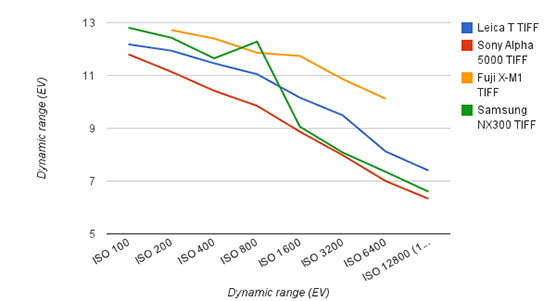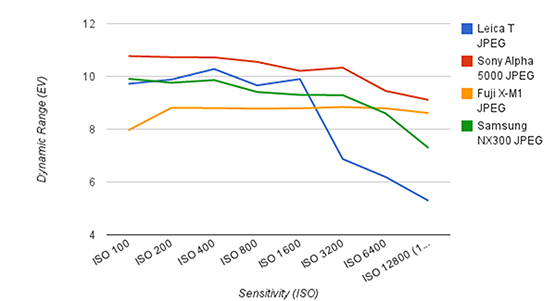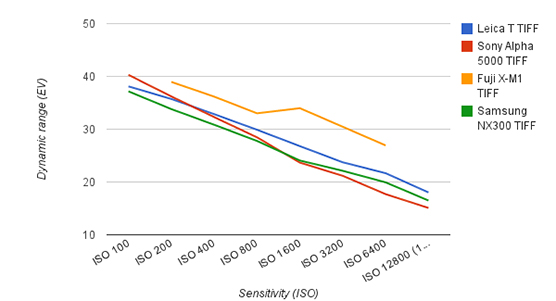Why you can trust TechRadar
We shoot a specially designed chart in carefully controlled conditions and the resulting images are analysed using DXO Analyzer software to generate the data to produce the graphs below.
A high signal to noise ratio (SNR) indicates a cleaner and better quality image.
For more more details on how to interpret our test data, check out our full explanation of our noise and dynamic range tests.
Here we compare the Leica T with the Sony a5000, Fuji X-M1 and the Samsung NX300.
JPEG signal to noise ratio

In this chart we can see that the lowest end of the sensitivity run, the Leica compares well with the other cameras on the test. However, as the sensitivity raises, the Leica T drops to the bottom of the pile, falling quite steeply at the highest sensitivities of ISO 3200, 6400 and 12800.
Raw signal to noise ratio

For the raw format data (after conversion to TIFF), there's a bit more separation between the cameras. Here, the Leica T performs better than the Sony Alpha 5000 throughout the sensitivity range, but it's not quite as good as the Samsung NX300 at the lower end of the sensitivity scale, or the Fuji X-M1 throughout it.
JPEG dynamic range

The Leica T performs similarly to the Samsung NX300 at the lower end of the sensitivity run for dynamic range in JPEGs. After ISO 1600, it dips fairly drastically to sit at the bottom f the chart. Here it is the Sony Alpha 5000 which puts in the best performance.
Raw dynamic range

For raw format data (after conversion to TIFF), the cameras here all put in a very similar performance. The Leica T is marginally better than the Sony Alpha 5000 and the Samsung NX300, but it is the Fuji X-M1 which comes out on top.
Current page: Noise and dynamic range
Prev Page Image quality and resolution Next Page Sensitivity and noise imagesAmy has been writing about cameras, photography and associated tech since 2009. Amy was once part of the photography testing team for Future Publishing working across TechRadar, Digital Camera, PhotoPlus, N Photo and Photography Week. For her photography, she has won awards and has been exhibited. She often partakes in unusual projects - including one intense year where she used a different camera every single day. Amy is currently the Features Editor at Amateur Photographer magazine, and in her increasingly little spare time works across a number of high-profile publications including Wired, Stuff, Digital Camera World, Expert Reviews, and just a little off-tangent, PetsRadar.
